In this article, we will discuss computer memory, its different types and applications, and units of memory measurement. So, let us begin with the basic definition of computer memory.
What is Computer Memory?
The term “memory”
denotes the ability of a device to store information. Therefore, the ability of
a device or piece of equipment by virtue of which it stores information is
called memory.
In computers, memory is one of the most crucial components of
the system. In a typical computer system, several types of the memory devices are
used such as CD, DVD, HDD, SSD, etc.
Memory is used to store data, instructions, and information
in the computer system. Computer memory stores data and information in the
digital form, i.e. binary form. The electronic devices of the computer system
having memory are said to be memory
devices or storage devices.
As we know, a single computer system has different types of
memories, which are described in the next sections of this article, hence, the
collection of memory devices is referred to as the memory unit or storage unit
of the computer.
Types of Computer Memory
In computers, several types of memory devices are used, some
of the important and most used memory devices are explained below:
(1). Random Access Memory (RAM):
RAM or Random Access Memory is a type of primary memory in a computer which is used to store data and instructions temporarily. RAM is mainly used to store data which are currently being processed or used by the CPU (Central Processing Unit). In modern computers, RAM used is made up of semiconductors.
The most significant point that we have to remember about
RAM is that it is a volatile memory,
i.e. data stored in it is lost when the computer is shut down.
Random Access Memory (RAM) is further classified into two
types namely, SRAM and DRAM.
SRAM stands for Static Random Access Memory. The cells of
SRAM are made up of flip-flops. While DRAM stands for Dynamic Random Access
Memory. DRAM is made up of capacitors and transistors. RAM used in most personal computers is the DRAM.
(2). Read-Only Memory (ROM):
As the name implies, Read Only Memory is a type of computer memory used to store data and instructions permanently. ROM is also a type of primary memory. The data and information stored in the ROM cannot be modified. Hence, in computer systems, it is used to store firmware like BIOS (Basic Input Output System). Similar to RAM, ROM is also made up of semiconductors and comes in the form of ICs (Integrated Circuits).
As stated, ROM stores data and information permanently,
hence it is a type of non-volatile
memory, whose data does not delete when the computer is turned off.
There are several types of ROMs such as PROM (Programmable
Read Only Memory), EPROM (Erasable Programmable Memory), and EEPROM
(Electrically Erasable Programmable Read Only Memory).
(3). Hard Disk Drive (HDD):
HDD (Hard Disk Drive) is a type of secondary memory. HDD is a type of non-volatile memory used for the permanent storage of information on the computer system. A hard disk drive is made up of non-magnetic circular disks (platters). These platters are coated with a layer of magnetic material which acts as the data storage medium.
HDDs are primarily used to store large volumes of data in
computers and laptops. The major disadvantages of HDDs are, they have a shorter
life span and slow speed as compared to other modern memory devices.
(4). Solid State Drive (SSD):
Solid State Drive (SSD) is a type of secondary memory. It is a semiconductor memory which makes use of flash chips (integrated circuits) to store data. SSD is a relatively newer technology memory device. In SSDs, there are no mechanical parts like an HDD, hence they have longer lifespans. Also, SSDs have high read/write speeds and consume less power. But, they are more expensive when compared to HDDs for storage capacity.
(5). Cache Memory:
Cache memory is a special type of computer memory. This is used in computers to increase the speed of the system. Cache memory acts as a buffer between the CPU and RAM of the computer. It stores data and programs that are most frequently accessed by the processor. Hence, the primary purpose of using cache memory in a computer is to enhance the system's performance. Cache memory is basically an SRAM. Hence, it is also a volatile memory.
Units of Measurement for Storage Data
We have several measurement units to measure data stored in
computer memory. The measurement units of memory are used to specify the amount
of memory space available or consumed by a piece of information. The most common
memory measurement units are described below:
|
S.
No. |
Measurement Unit |
Description |
|
1. |
Bit (Binary Digit) |
The bit is the smallest unit of memory measurement. It represents a
single binary digit, i.e. a 0 or a 1. |
|
2. |
Nibble |
1 Nibble = 4 Bits. Hence, a nibble is a unit of memory that contains
four binary digits. For example, 1101 is a group of four bits, thus it is equal
to 1 nibble memory size. |
|
3. |
Byte (B) |
1 Byte = 8 Bits. Byte is the basic unit used to measure most computer
memories. |
|
3. |
Kilo Byte (kB) |
1 kB = 210 Bytes = 1024 Bytes. |
|
4. |
Mega Byte (MB) |
1 MB = 1024 kB |
|
5. |
Giga Byte (GB) |
1 GB = 1024 MB |
|
6. |
Tera Byte (TB) |
1 TB = 1024 GB |
|
7. |
Peta Byte (PB) |
1 PB = 1024 GB |
|
8. |
Exabyte (EB) |
1 EB = 1024 PB |
|
9. |
Zettabyte (ZB) |
1 ZB = 1024 EB |
|
10. |
Yottabyte (YB) |
1 YB = 1024 ZB |
All these measurement units are used to measure the memory
capacity of different types of computer memory such as RAM, ROM, Hard Disks,
SSDs, etc.
Hence, this is all about computer memory, types of computers,
and units of memory measurement.


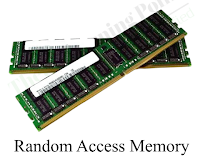
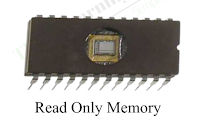
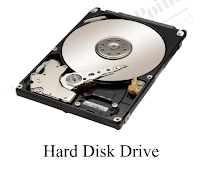
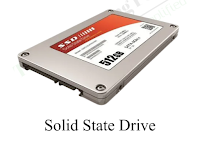
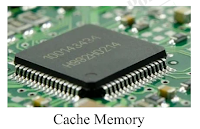
.png)




